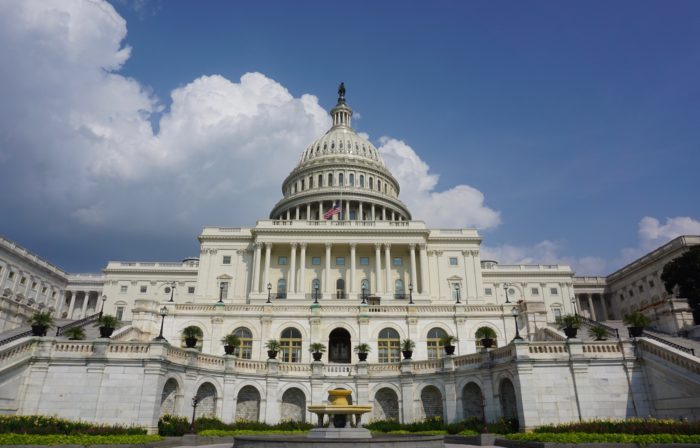
Last week, the House Agriculture Appropriations Subcommittee released their proposal to fund the US Department of Agriculture (USDA) and the US Food and Drug Administration (FDA) for fiscal year (FY) 2024. At the Subcommittee markup on May 18, House Agriculture Appropriations Chair Andy Harris (R-MD-01) released the text of the House’s FY 2024 Agriculture Appropriations Bill.
If enacted, the bill would slash FY 2024 agriculture spending more than 30% below the FY 2023 enacted level, a cut of more than $8.3 billion. Cloaked in claims of offering “accountability”, in truth these far-reaching cuts would only undermine the success of farmers, ranchers, rural communities, and our shared food system.
The steep cuts included in the bill would have unavoidable and damaging consequences across the US food and farm system – impacting farmers, ranchers, communities, and eaters from coast to coast. In an apparent break from tradition, at the time of posting the Subcommittee has yet to publicly release what is known as a “report”, which accompanies the bill text and provides important details on program funding levels. The details of the report are important to round out our understanding of the proposal. Yet even without the report, there is more than enough to understand how damaging this proposal would be.
The Natural Resources Conservation Service (NRCS) Conservation Operations account – which funds NRCS staffing and technical assistance that supports the adoption of on-farm conservation practices – would be cut by nearly $30 million. The USDA’s Office of Tribal Relations would be cut by nearly 60%, and the Office of Civil Rights by nearly 40%. Meanwhile, Rural Cooperative Development Grants would be slashed by over 30%.
The table below offers a glimpse at some of the proposals included in the draft bill:
| USDA Office/Program | FY 2023 Enacted Level (P.L. 117-328) | FY 2024 House Proposed Funding | Percentage Reduction |
| Office of Tribal Relations | $5,190,000 | $2,215,000 | -57% |
| Office of the Under Secretary for Rural Development | $1,620,000 | $800,000 | -51% |
| Office of the Under Secretary for Marketing & Regulatory Programs | $1,617,000 | $800,000 | -51% |
| Office of the Under Secretary for Farm Production & Conservation | $1,727,000 | $901,000 | -48% |
| Office of Civil Rights | $37,595,000 | $22,789,000 | -39% |
| Office of Assistant Secretary for Civil Rights | $1,466,000 | $901,000 | -39% |
| Office of the Secretary | $65,067,000 | $41,072,000 | -37% |
| Rural Cooperative Development Grants | $28,300,000 | $19,600,000 | -31% |
| Office of the Under Secretary for Food Safety | $1,117,000 | $800,000 | -28% |
| Office of the General Counsel | $60,537,000 | $44,408,000 | -27% |
| Agricultural Marketing Service | $237,695,000 | $184,668,000 | -22% |
| USDA Rural Development | $351,087,000 | $331,087,000 | -6% |
| Natural Resources Conservation Service (NRCS) Conservation Operations | $941,124,000 | $911,399,000 | -3.2% |
These steep cuts only tell part of the story. Summary material from the House Majority indicated that the bill would also eliminate “funding for climate hubs and climate change research” and for “conservation equity agreements”. Furthermore, the draft FY 2024 bill also includes a wide array of limitations and rescissions, ranging from obviously partisan to downright draconian, that would:
- Prevent implementation of three rules designed to promote fair competition for livestock farmers: the (1) Transparency in Poultry Grower Contracting Tournaments, the (2) Inclusive Competition and Market Integrity Under the Packers and Stockyards Act, and (3) the Unfair Practices, Undue Preferences, and Harm to Competition Under the Packers and Stockyards Act, as well as any similar rulemaking effort (Sec. 737). Read more on fair competition from NSAC here.
- Rescind $500 million of Inflation Reduction Act (IRA) Rural Energy for America Program (REAP) funds (Sec. 722). Read more about REAP’s IRA funding here.
- Rescind $500 million of unobligated American Rescue Plan Act (ARPA) funds, specifically from the Food Supply Chain & Agriculture Pandemic Response provision, ARPA Sec 1001(a) (Sec. 741).
- Block USDA from carrying out a variety of its racial equity-focused initiatives, including anything related to Executive Orders 13985, 14035, and 14091, or to create and establish an Office of the Chief Diversity & Inclusion Officer (Sec. 764).
- Rescind all unobligated funds from IRA’s Farm Loan Immediate Relief for Borrowers with At-Risk Agricultural Operations, Sec. 22006. (Sec. 748)
- Cap all expenses for US Department of Agriculture advisory committees, panels, commissions, and task forces at a total of $2.9 million for FY2024. (Sec. 712)
- Prevent USDA from effectively serving farmers, ranchers, and other stakeholders by needlessly limiting the Departments hiring of National Capital Region-based staff. (Sec. 738)
- Cut WIC and SNAP benefits for millions, including for older adults.
What’s Next?
The House Appropriations Committee was originally scheduled to markup and vote on the FY 2024 Agriculture Appropriations bill on Wednesday, May 24. However, a day before the markup was scheduled, Chair Kay Granger (R-TX-12) postponed the markup citing her desire “to give the Speaker [McCarthy] maximum flexibility as [debt-limit] talks continue.” Full House Committee markup is now expected the week of June 5, at the earliest.
Following full Committee markup, according to normal Congressional order, the bill will be taken up by the full House chamber, where it would be voted on and eventually conferenced – or reconciled – with the version resulting from a similar process in the Senate.
However, given the partisan nature of the House proposal, it is exceedingly unlikely that this proposal would pass muster in the Senate. The Senate, meanwhile, has indicated that it will begin marking up its own FY 2024 appropriations proposals as early as June. All of this, of course, comes amidst an hectic Congressional calendar and a looming September 30 expiration of FY 2023 government funding.
In the days ahead, we anticipate more details of the House proposal becoming available – as it does, stay tuned to the NSAC blog.

